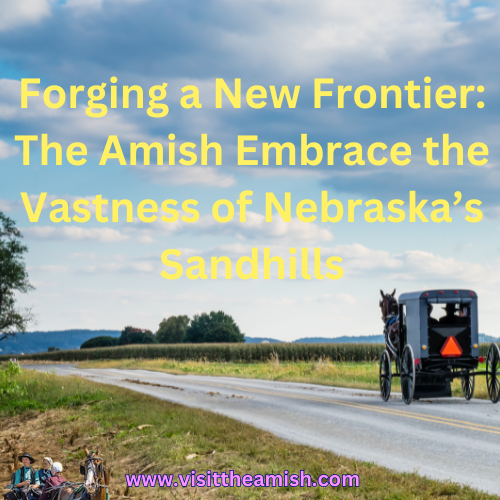Forging a New Frontier: The Amish in Nebraska
In a story that echoes the pioneer spirit of bygone eras, a group of Amish settlers has ventured into the heart of the Sandhills region in Nebraska, marking the inception of a burgeoning community in a landscape as expansive as the dreams they hold.
The Sandhills, a remote and sparsely populated area, now plays host to a unique settlement, its nearest address, Valentine, a mere geographical marker for a community that thrives in splendid isolation some 40 miles away. It’s a departure from the traditional settings associated with the Amish, a departure they seem to embrace with a pioneering zeal.
Led by Reuben Miller, the 46-year-old bishop, this band of Amish families left behind the familiarity of Michigan’s landscape, exchanging a bustling farm for a 5,038-acre ranch along the Niobrara River. Miller’s yearning for solitude and the vast expanse of the West fueled this migration, a quest to be enveloped by the quietude of nature, away from the hustle and bustle of modern life.
Their adaptation to this new terrain isn’t without its challenges. The dry grasses of the Sandhills test the mettle of their draft horses, while cockleburs and deer flies become familiar companions. Yet, amidst this starkly different landscape, they’re establishing their roots, envisioning a community that may soon rival established towns in Cherry County, Nebraska.
What’s intriguing is their divergence from the typical Amish preference for verdant farmlands. Instead, they are drawn to the vast expanses of cattle country, seeking new opportunities and possibilities amidst the open fields and endless horizons.
This migration isn’t an isolated incident. Nebraska, once a sparsely Amish-populated state, has seen a slow but steady increase in settlements. The economics of land and livelihood play a pivotal role in these decisions, with the Kilgore group investing $9.65 million in their new 5,038-acre domain, reflecting the financial stability achieved through hard work and prudent financial habits.
Their foray into entrepreneurship, establishing businesses for saw sharpening and crafting log-home kits, showcases their drive to create sustainable livelihoods in this new setting. Yet, amid their pursuits, they strive to maintain the simplicity that defines their culture, eschewing modern distractions like television while acknowledging their interdependence with the larger society.
Their narrative of establishing a new community, rooted in individual property ownership yet characterized by a collective spirit, echoes the resilient spirit of the early settlers, building a future on the foundations of hard work, tradition, and a desire for a simpler life.
In their quest for seclusion and harmony with nature, they’ve chosen a path divergent from the modern world, but one that mirrors the pioneering spirit and self-sufficiency that has defined human exploration for centuries. As they carve their place in the vastness of the Sandhills, this Amish community symbolizes a timeless pursuit of a life aligned with nature, embodying the essence of forging a new frontier in the heart of America’s heartland.

